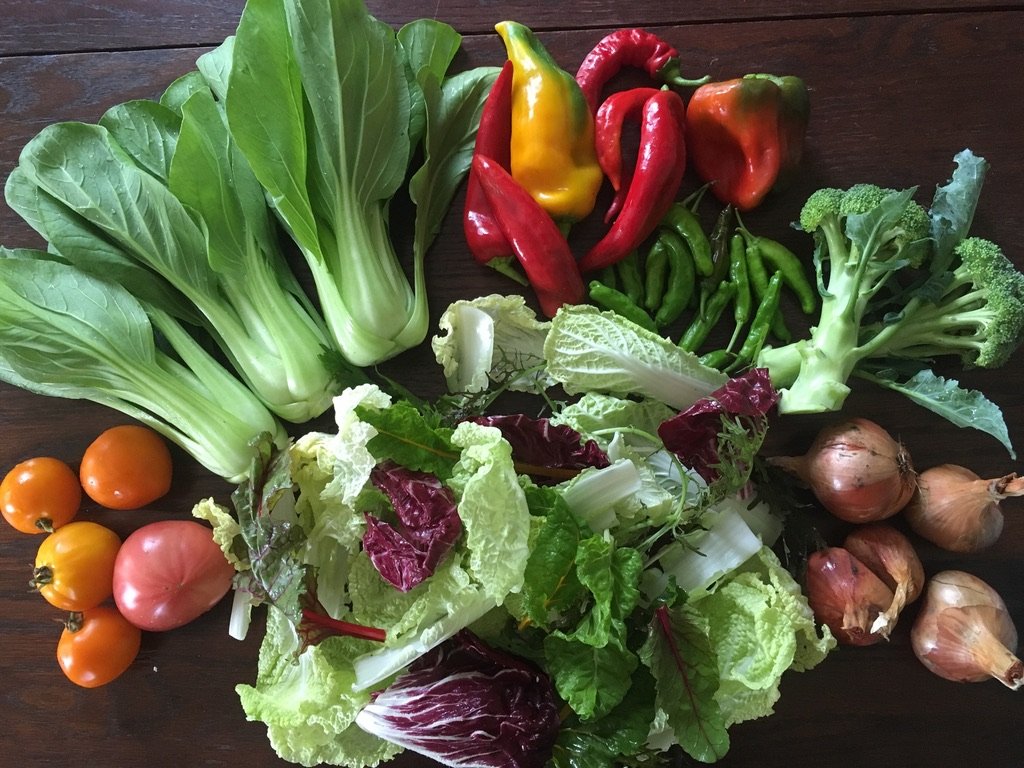September 24th, 2019
What’s in your share?
Sweet Italian Peppers
Stir Fry Mix (napa cabbage, radicchio, mustard, mizuna, rainbow chard)
Tomatoes
Shallots
Bok Choy
Shishito Peppers
Broccoli
Yesterday was the Fall Equinox, the time when the northern hemisphere becomes further and further away from the sun, until the Spring Equinox. We are preparing for the rapidly shortening days. The last of the seeds have been seeded in the propagation house; anything seeded after this week will not mature before the season’s CSA is over. As crops mature and are harvested, we’re clearing them out of beds in preparation for winter.
Into the beds which grew our food all season, new crops will be sown. They are not for food; they are for replenishing the soil. These crops, called cover crops, have many purposes. They hold the soil in place over the winter, so that our permanent raised bed system maintains its structure as the snow thaws and eventually flows down our footpaths. They also help the soil warm up faster in the spring, because soil with life and microbial activity produces more electrons than soil that is frozen and empty. Cover crops also help to fix nutrients in the soil. Because growing nutrient dense food requires the soil to start with balanced nutrition, we need to be sure to replenish what the soil has given our food crops, and make sure there will be enough for next season.
One last benefit of a cover crop is that some of them can be used as living mulches, or cut down to be used as a mulch. Many of our crops such as tomatoes, peppers, broccoli, kale, and eggplant are in the ground for a long time, and adding a layer of mulch to the soil can significantly help the soil to hold in moisture and nutrients, and also suppress weeds. Many farmers use plastic landscape fabric as mulch, and we have been tempted by its ability to suppress weeds and retain moisture. However, plastic is overused in agriculture, and so we are experimenting with growing our own. Soon we will plant our garlic, and because it stays in the soil over the winter, it will need 6-8 inches of mulch in order to protect from deep freezes. We have used straw in the past, and will again this year, but organic straw is very expensive, especially as the climate becomes more unpredictable, so we want to become self-sufficient in this way.
While the simplistic likening of winter to death is tempting, it is important to understand that this is a time of replenishment. The snow cover becomes the womb by which our land is reborn. Though planting and harvesting become slower, this does not mean that the land is done for the season.
